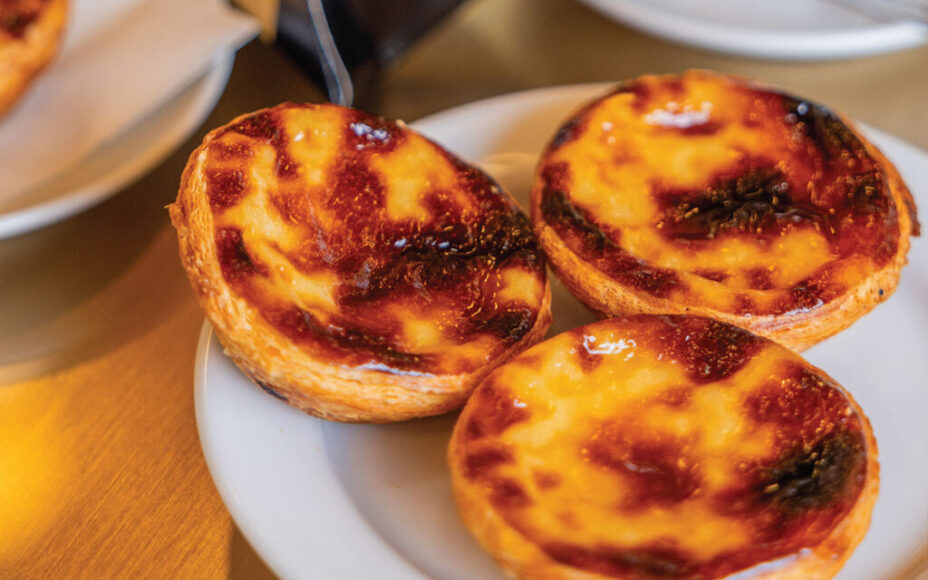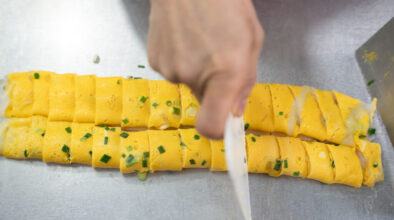There’s a near obsession with egg tarts in Macao. Take a stroll down the narrow lanes of the old city: you’re bound to pass dozens of stores peddling takes on the beloved pastry. The tarts sit snugly in heated display cases, waiting to be packed into colourful cardboard boxes for buyers to take home. “Confection of custard tarts” is, in fact, inscribed on Macao’s official list of intangible cultural heritage. They’ve become a symbol of the city: tourists remember their trip to Macao when glancing at a tart-shaped fridge magnet or pulling on their tart-themed socks.
Egg tarts may be ubiquitous in Macao, but they’re not uniform. Connoisseurs divide them into two broad categories: the Hong Kong-style dan tat, commonly found at dim sum restaurants, and a local reimagining of Portugal’s famous pastéis de nata. Here’s a quick way to tell them apart: the latter have caramelised tops, identifiable by dark scorch marks on their custard filling, while the former – dan tat – are a shiny, unblemished yellow.
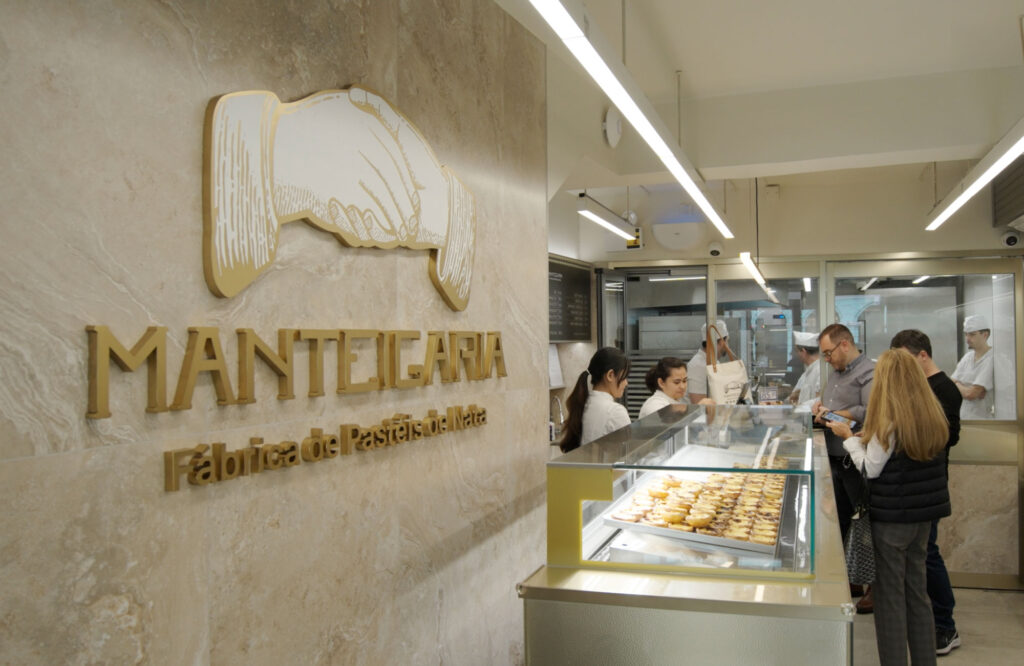
Somewhat confusingly, the Portuguese-style iterations go by a few different names. You’ve the official ‘Lord Stow’s egg tarts’, named by and for the Macao-based English baker, Andrew Stow, who developed them in the 1990s. Some people refer to Stow’s creations as ‘Macao egg tarts’ to distinguish them from their Hong Kong counterparts. Others go with pôu tát, the direct translation of ‘Portuguese-style egg tart’ to Cantonese.
Casual observers might mistake Stow’s tarts for genuine pastéis de nata (there are scorch marks on both – that’s the Portuguese style, afterall). But a Portuguese tongue would know the difference. The localised version consists of crispy puff pastry more similar to that of the dan tat, encasing a wobbly, pudding-like custard baked raw. In contrast, the filling of a real pastel de nata is first cooked on the stove, where it’s infused with a cinnamon stick and lemon rind. Its shell is softer, more buttery, allowing its custard to ever-so-slightly permeate the pastry layers.
Curiously, given the city’s centuries of Portuguese influence and passion for custardy confections, Macao has long lacked a definitive representation of the pastel de nata. That was until the arrival of cafe Manteigaria, known for tarts made strictly to a recipe developed by Portuguese monks back in the 18th century.
News that a local branch of one of Portugal’s best-loved bakeries could be setting up shop in Macao broke last October, generating excitement within the city’s Luso community. After what felt like a long wait, Manteigaria’s narrow, two-storey Avenida da Praia Grande premises opened in the heart of Macao’s finance district in January.
Not just any egg tart

Established in Lisbon’s hip Chiado district in 2014, Manteigaria initially faced fierce competition in the Portuguese capital – where pastéis de nata are routinely eaten alongside an espresso. But it quickly rose to the top thanks to artisanal preparation techniques and the use of premium ingredients. Today, Manteigaria is the second highest-rated Lisbon coffee shop on TripAdvisor. Macao magazine was one of the new Macao branch’s first visitors.
“We don’t sell egg tarts,” insists Diogo Vieira, managing director of Manteigaria and a managing partner in the Portugália group in Macau that operates the franchise. “This is a Portuguese pastel de nata.”

The Macao-based Portgual-native explains that the shop’s mission is not only to treat the taste buds of its patrons – but to debunk misconceptions they may have. Macao’s culinary landscape, recognised by UNESCO as the birthplace of fusion cuisine, often blurs boundaries, he notes. Take the Macanese dish African chicken. Served nowhere in Africa, it’s named for the Mozambique-sourced peri-peri peppers used liberally in its sauce. Vieira wants people to recognise the differences between dan tat, Macao egg tarts and pastéis de nata – and appreciate the sweet uniqueness of each.
To ensure authenticity at Manteigaria in Macao, its Portuguese head pastry chef Pedro Quintaneiro spent three months in Lisbon training under the brand’s master baker. Now Manteigaria’s Macao customers can watch him and his colleagues – in their white chefs hats and aprons – hard at work in the new premises’ show kitchen. Making pastéis de nata by hand is a labour-intensive process that requires both patience and passion, and the bakery is eager to have these attributes on display.
“At Manteigaria, we’re going back to old methods,” Quintaneiro says. “We mix the cream by hand, for example. We use whole eggs and proper butter.” Traditional Portuguese bakers, he adds, frown upon the use of margarine.
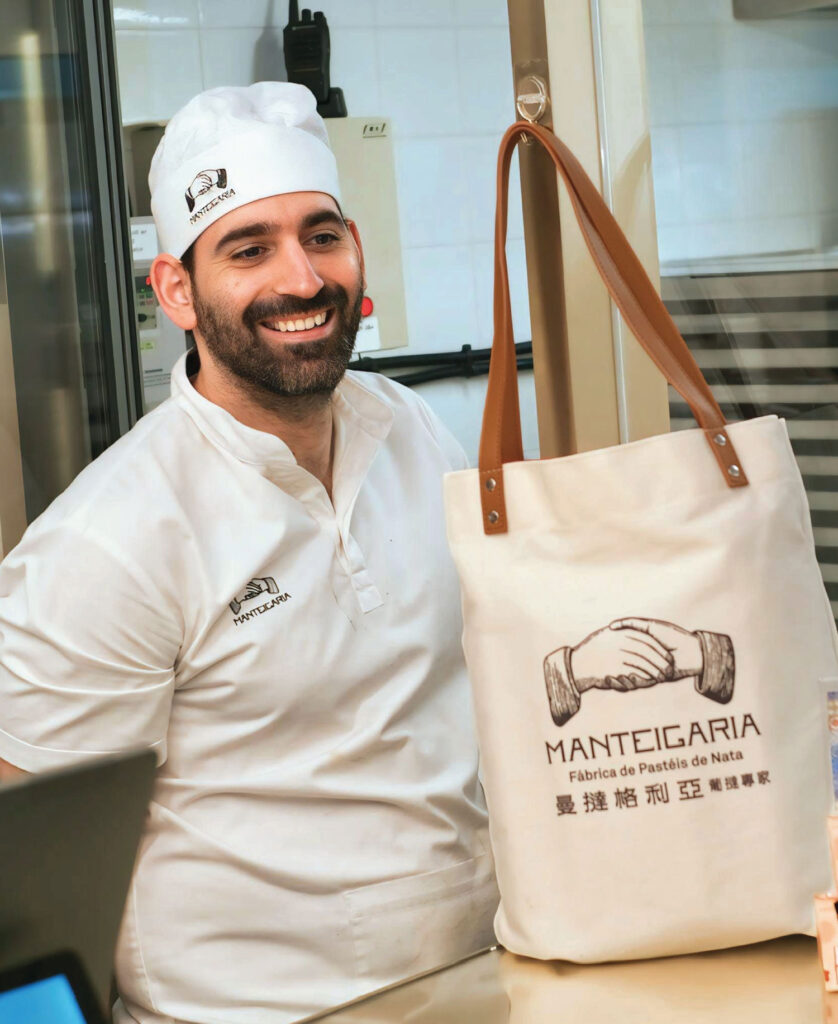
Keen eyes might notice some of Manteigaria’s tarts are a little darker on top than others, indicating they’ve spent longer in the oven. This is the bakery’s only concession to the local palate. Macao’s Chinese community tends to gravitate towards the lighter, less caramelised custards, while those interested in sampling pastéis de nata as the monks would have served them opt for the darker batches.
Sticking with a Portuguese tradition, whenever a fresh batch of tarts emerges from the oven, a Manteigaria staffer steps outside the bakery’s door to ring a bell. This is the signal it’s time to indulge: authentic pastéis de nata are best enjoyed warm and with a fresh sprinkling of cinnamon (those buying theirs to go get a takeaway packet of the aromatic spice to sprinkle at their leisure).
The store has been designed primarily for takeaway, though customers do have the option to perch at the standing counter – enjoying their pastry with coffee in an environment that looks strikingly similar to Manteigaria’s European branches.
A culinary bridge
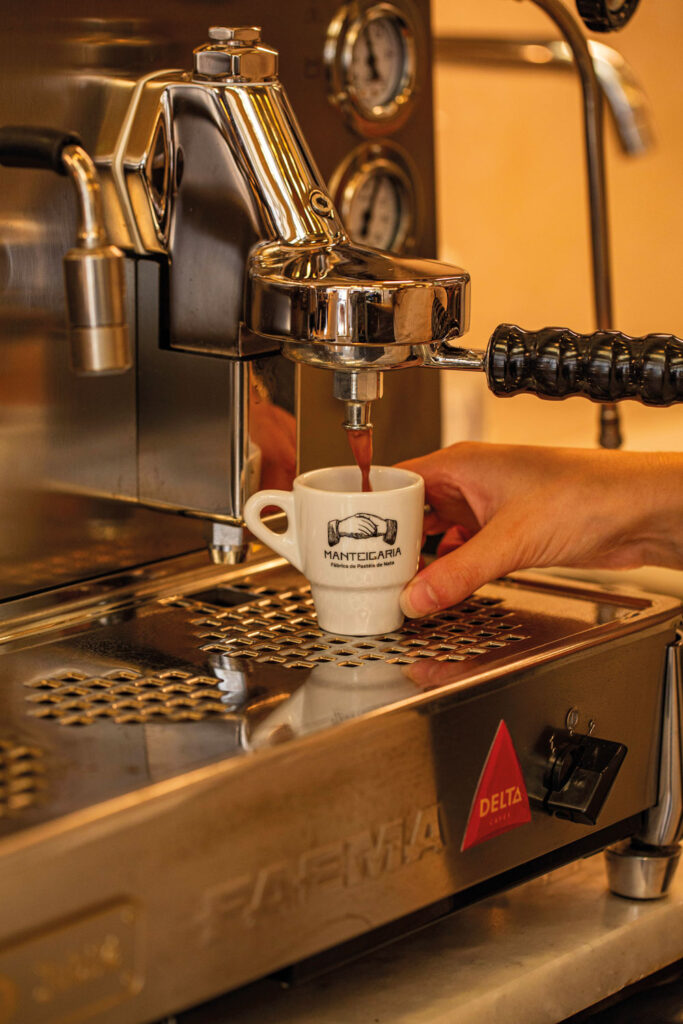
Manteigaria in Macao is the brand’s first branch in Asia, and the Special Administrative Region is its third market outside of Portugal (there are two Manteigarias in Paris, France, and a Spanish one opened in Madrid just a day before Macao’s).
“The plan was always to start with Macao for the expansion of the brand in Asia,” Vieira says. “There’s still a deep connection between Macao and Portugal, and we always believed that this product was something we should bring to Macao, especially since it’s done in a traditional way as we do.”
The Macao iteration of the bakery has already proved popular enough for Manteigaria’s head office to consider opening a second branch in the city. It’s also mulling expansion across the estuary, to bring pastéis de nata to Hong Kong. In the meantime, anyone seeking egg tarts that are not just Portuguese in style, but Portuguese through-and-through, will find them on Avenida da Praia Grande.
